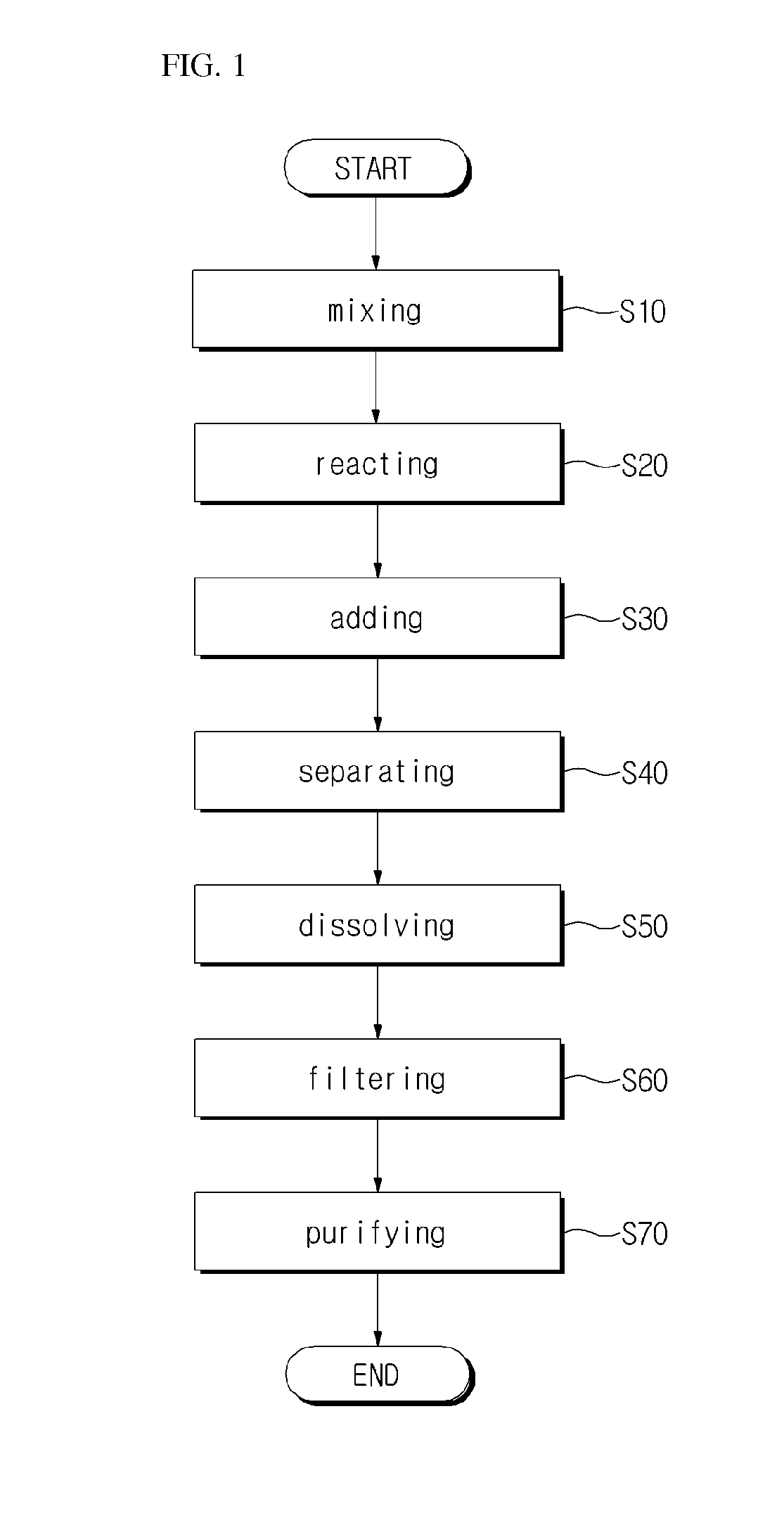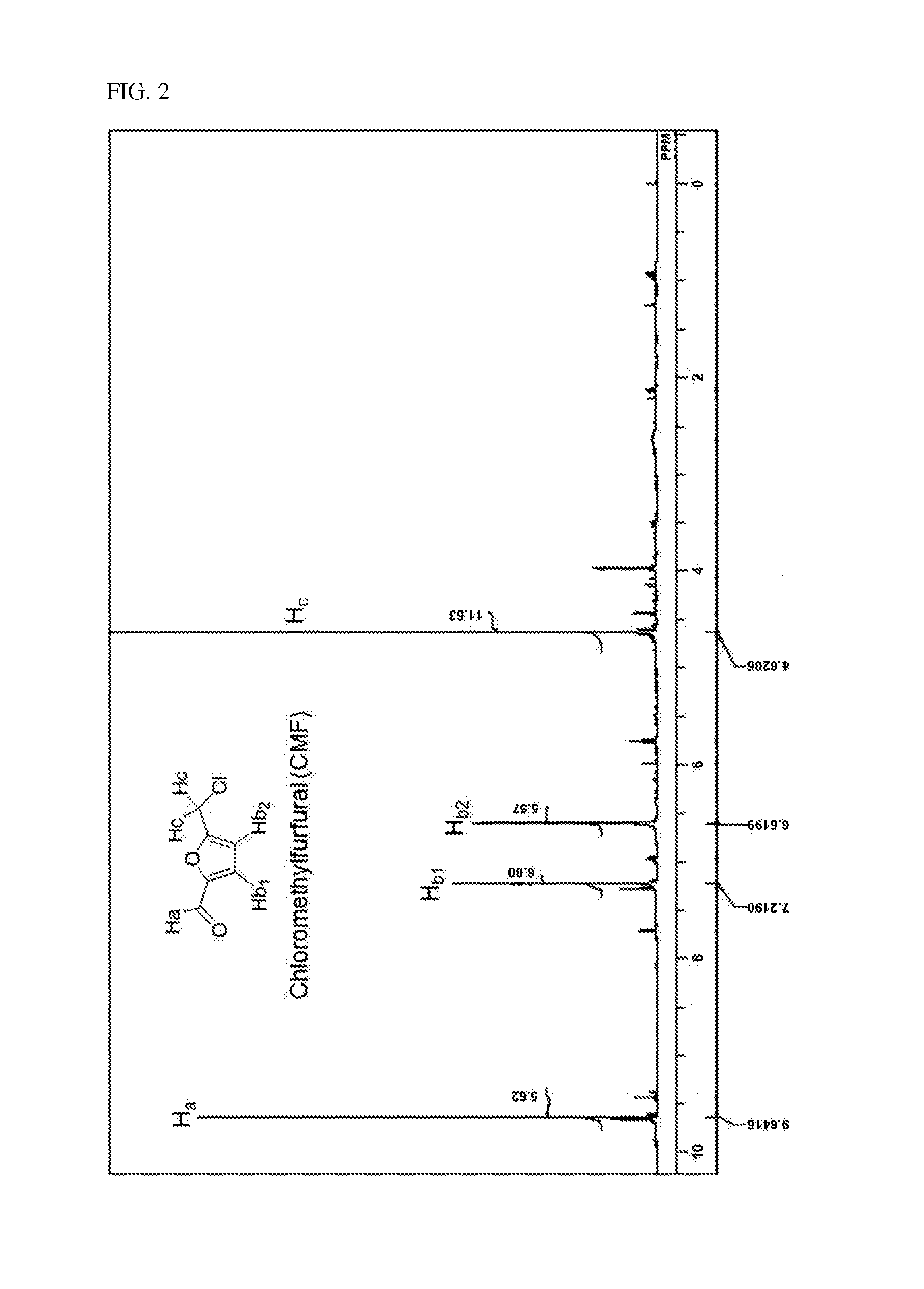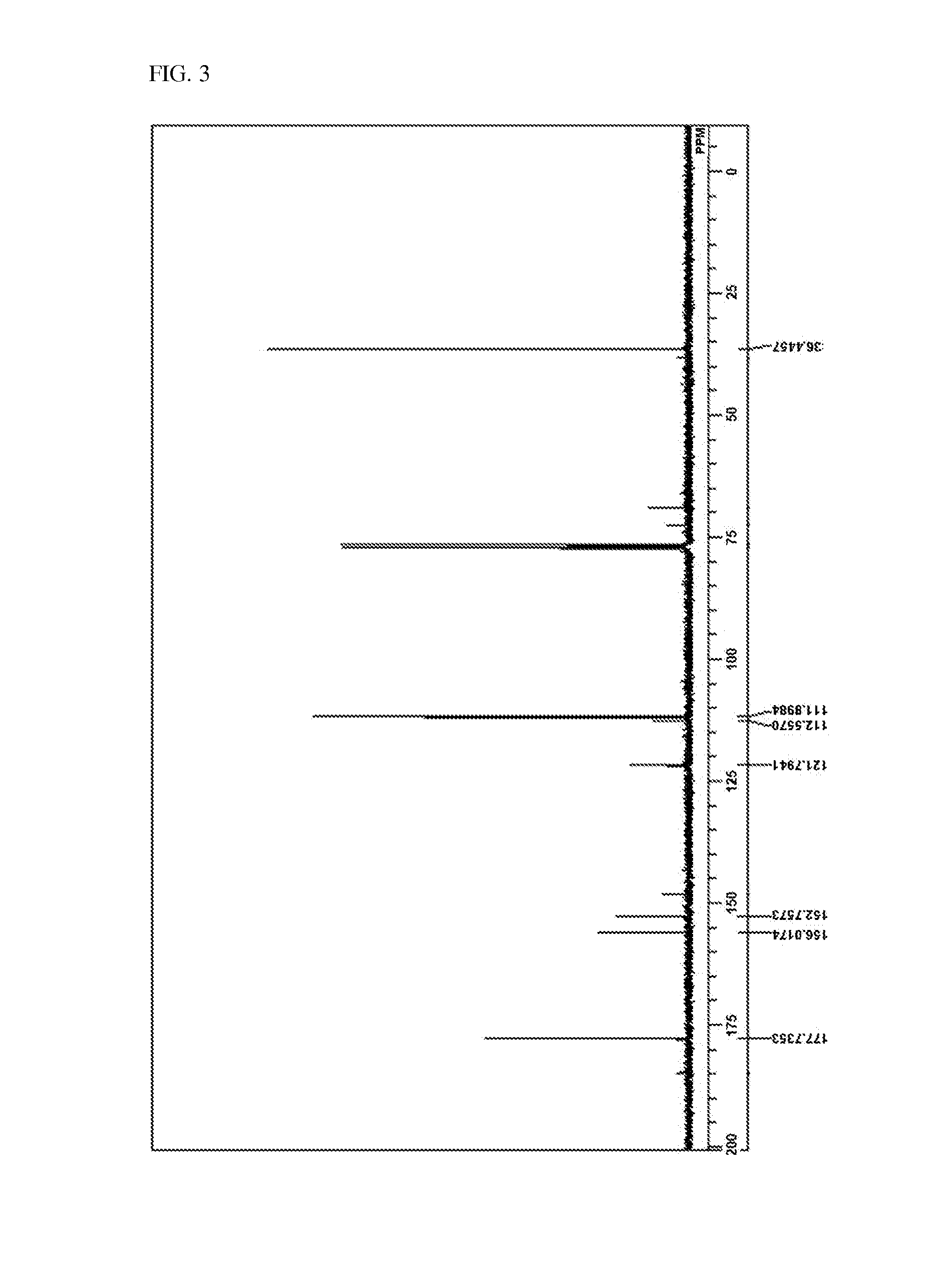Method for preparing 5-chloromethyl-2-furfural using galactan derived from seaweed in two component phase
a technology of seaweed and acid catalyst, which is applied in the direction of organic compound/hydride/coordination complex catalyst, physical/chemical process catalyst, organic chemistry, etc., can solve the problems of reducing the yield rate in the process of going through such a multi-phase process, increasing international crop prices, and difficult to effectively separate and remove. , to achieve the effect of reducing raw material costs, and high carbohydrate conten
- Summary
- Abstract
- Description
- Claims
- Application Information
AI Technical Summary
Benefits of technology
Problems solved by technology
Method used
Image
Examples
exemplary embodiment 1
[0089]10 g of Agarose, 50 mL of 1,1,2-trichloroethane 50 mL, 25 mL of thick hydrochloric acid, and 25 mL of distilled water were put into a 1 L reactor, a screw cap was closed, and then stirred. The temperature was gradually raised up to 90° C., and after heating, the mixture was stirred by 200 rpm, and the reaction was proceeded for 1 hour. Herein, in 30 minutes after starting the reaction, the reaction solution turned from light yellow to dark brown. After finishing the reaction, the reaction solution was cooled to room temperature, 50 mL of distilled water and 50 mL of 1,2,3-trichloroethane were added, and then moved to a separating funnel to separate the dilute hydrocholoric acid layer and organic solvent layer, the solvent of the organic solvent layer was distilled under reduced pressure and then removed. The remaining product after removing the solvent was melted in dicholoromethane (about 100 mL), and then silica was passed through, and then 1 g of activated carbon was put in...
exemplary embodiment 2
Using 3 Times of Organic Solvent
[0090]10 g of Agarose, 150 mL of 1,1,2-trichloroethane 50 mL, 25 mL of thick hydrochloric acid, and 25 mL of distilled water were put into a 1 L reactor, and a conversion reaction and a workup were performed in the same method as exemplary embodiment 1, and thus 4.32 g of CMF was obtained.
exemplary embodiment 3
Repeatedly Using Organic Solvent 3 Times
[0091]10 g of Agarose, 50 mL of 1,1,2-trichloroethane, 25 mL of thick hydrochloric acid, and 25 mL of distilled water were put into a 1 L reactor, and then a conversion reaction was performed in the same method as exemplary embodiment 1. After finishing the reaction, the organic solvent layer was separated by means of a separating funnel without any diluting process, and dilute hydrochloric acid layer was moved to the reactor again, and 50 mL of 1,2,3-trichloroethane was added, and additional conversion reactions were performed two more times. Organic solvent layers separated through each conversion reaction were collected, and a workup was performed in the same method as exemplary embodiment 1, and thus 3.40 g of CMF was obtained.
PUM
| Property | Measurement | Unit |
|---|---|---|
| temperature | aaaaa | aaaaa |
| temperature | aaaaa | aaaaa |
| temperature | aaaaa | aaaaa |
Abstract
Description
Claims
Application Information
 Login to View More
Login to View More - R&D
- Intellectual Property
- Life Sciences
- Materials
- Tech Scout
- Unparalleled Data Quality
- Higher Quality Content
- 60% Fewer Hallucinations
Browse by: Latest US Patents, China's latest patents, Technical Efficacy Thesaurus, Application Domain, Technology Topic, Popular Technical Reports.
© 2025 PatSnap. All rights reserved.Legal|Privacy policy|Modern Slavery Act Transparency Statement|Sitemap|About US| Contact US: help@patsnap.com



